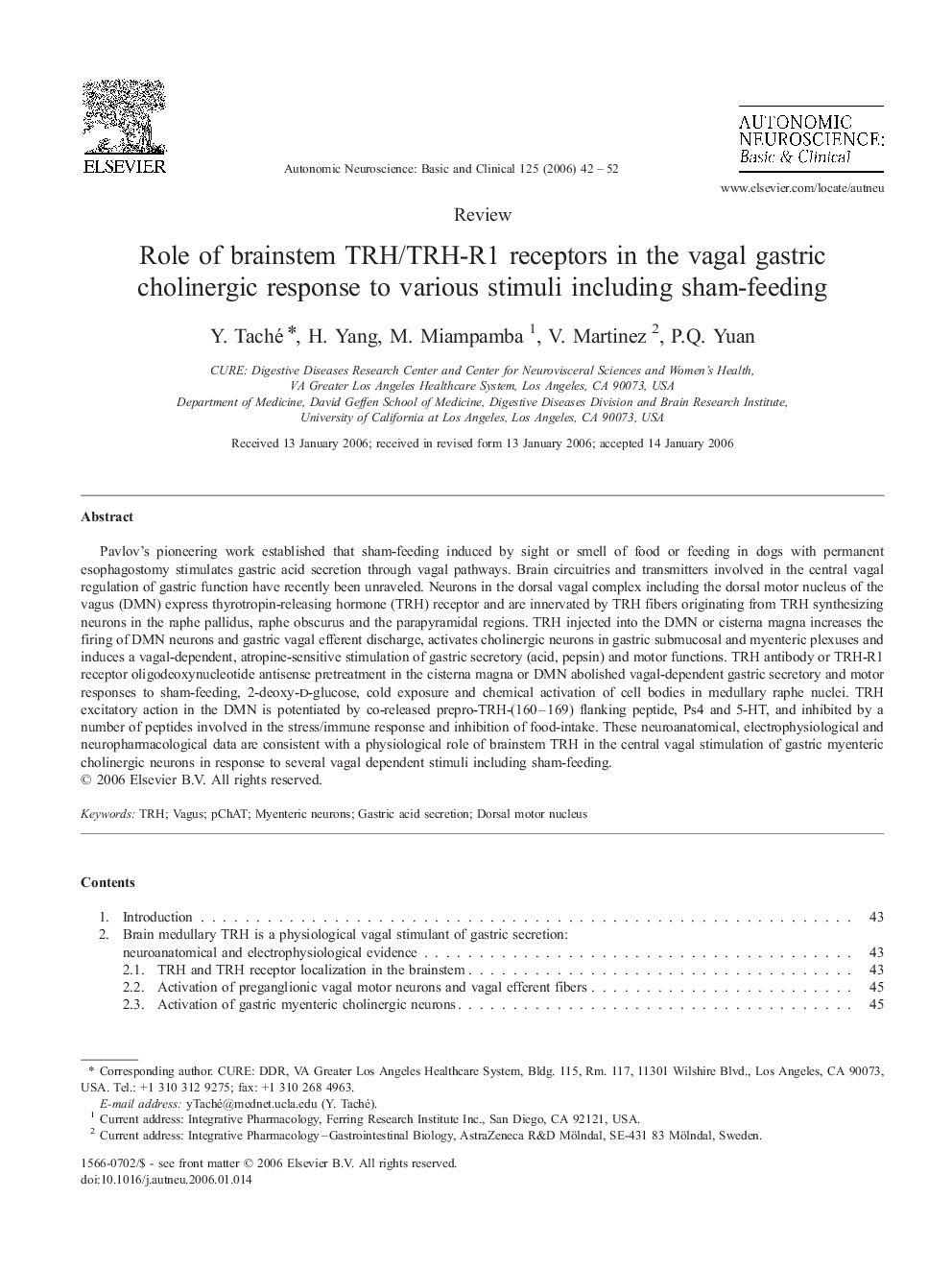| Article ID | Journal | Published Year | Pages | File Type |
|---|---|---|---|---|
| 3035911 | Autonomic Neuroscience | 2006 | 11 Pages |
Abstract
Pavlov's pioneering work established that sham-feeding induced by sight or smell of food or feeding in dogs with permanent esophagostomy stimulates gastric acid secretion through vagal pathways. Brain circuitries and transmitters involved in the central vagal regulation of gastric function have recently been unraveled. Neurons in the dorsal vagal complex including the dorsal motor nucleus of the vagus (DMN) express thyrotropin-releasing hormone (TRH) receptor and are innervated by TRH fibers originating from TRH synthesizing neurons in the raphe pallidus, raphe obscurus and the parapyramidal regions. TRH injected into the DMN or cisterna magna increases the firing of DMN neurons and gastric vagal efferent discharge, activates cholinergic neurons in gastric submucosal and myenteric plexuses, and induces a vagal-dependent, atropine-sensitive stimulation of gastric secretory (acid, pepsin) and motor functions. TRH antibody or TRH-R1 receptor oligodeoxynucleotide antisense pretreatment in the cisterna magna or DMN abolished vagal-dependent gastric secretory and motor responses to sham-feeding, 2-deoxy-d-glucose, cold exposure and chemical activation of cell bodies in medullary raphe nuclei. TRH excitatory action in the DMN is potentiated by co-released prepro-TRH-(160-169) flanking peptide, Ps4 and 5-HT, and inhibited by a number of peptides involved in the stress/immune response and inhibition of food-intake. These neuroanatomical, electrophysiological and neuropharmacological data are consistent with a physiological role of brainstem TRH in the central vagal stimulation of gastric myenteric cholinergic neurons in response to several vagal dependent stimuli including sham-feeding.
Related Topics
Life Sciences
Neuroscience
Cellular and Molecular Neuroscience
Authors
Y. Taché, H. Yang, M. Miampamba, V. Martinez, P.Q. Yuan,
